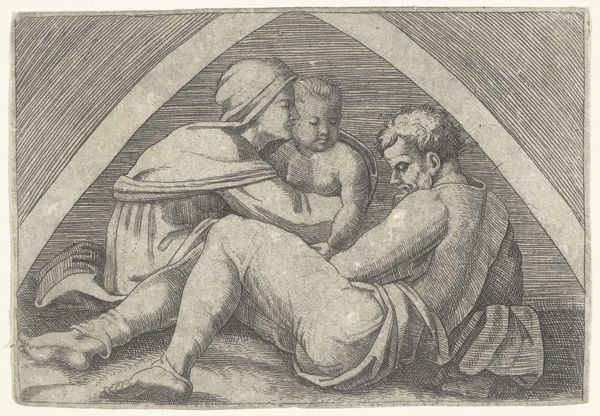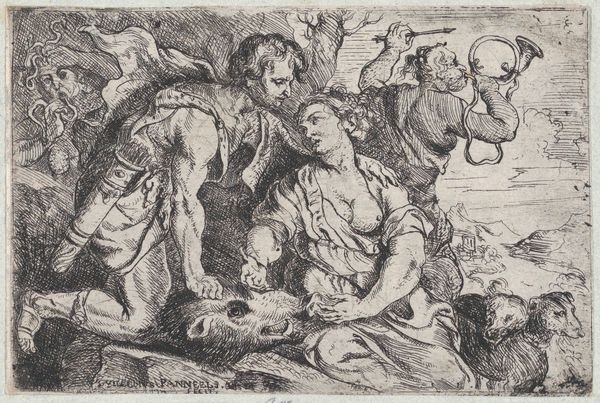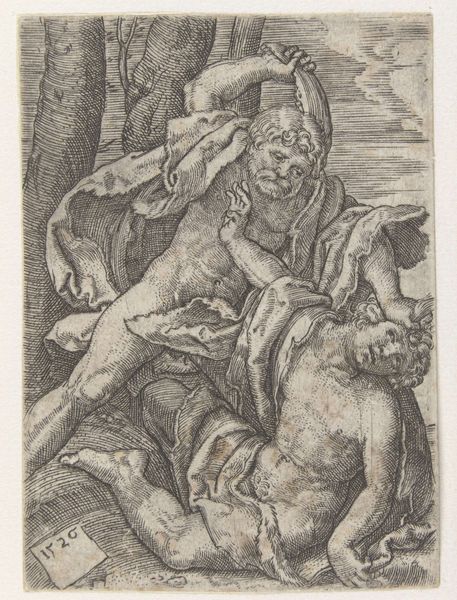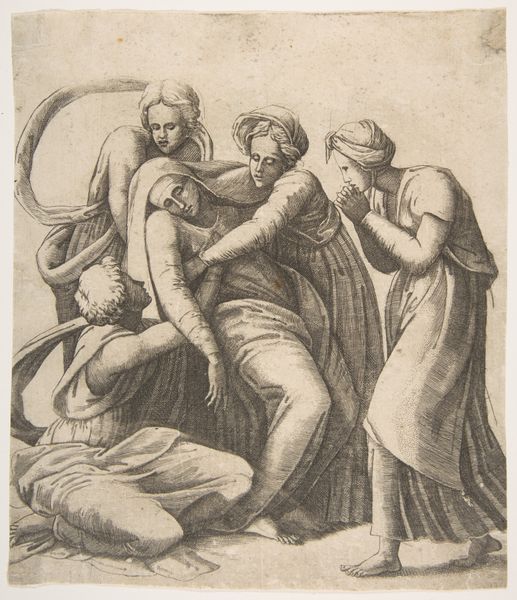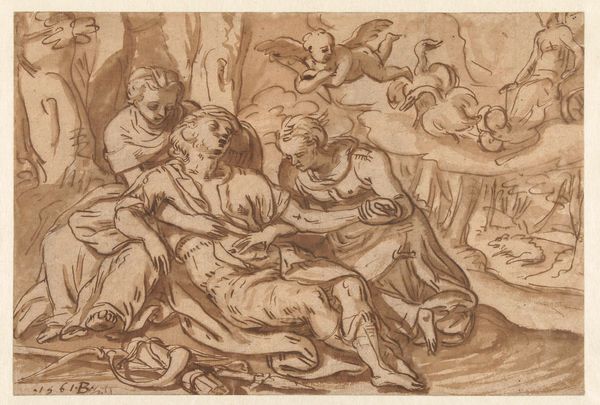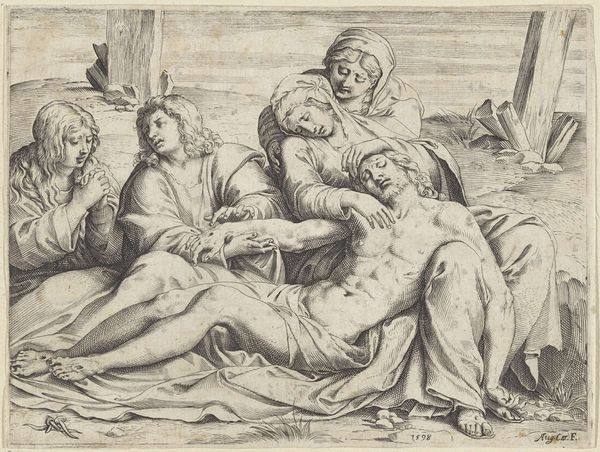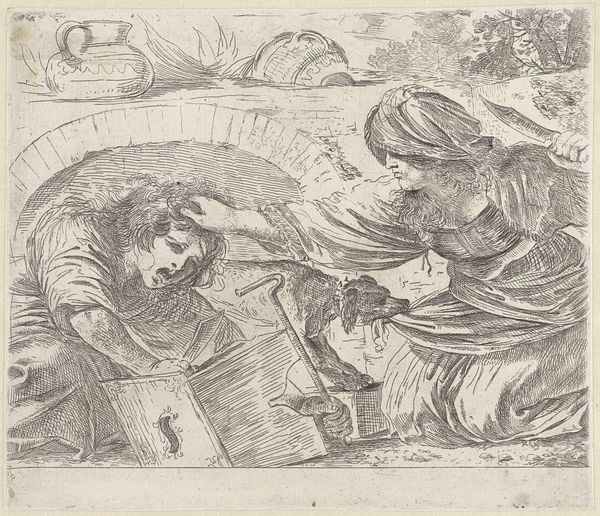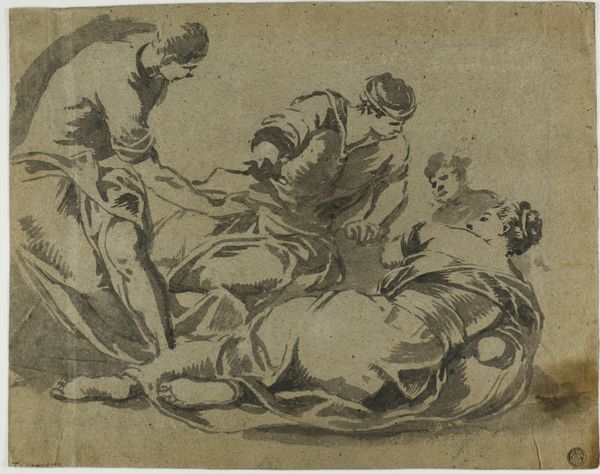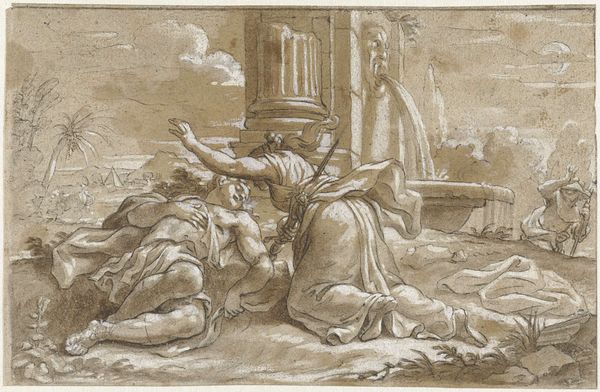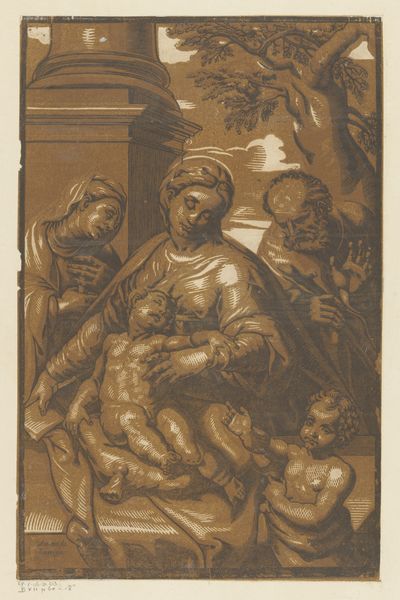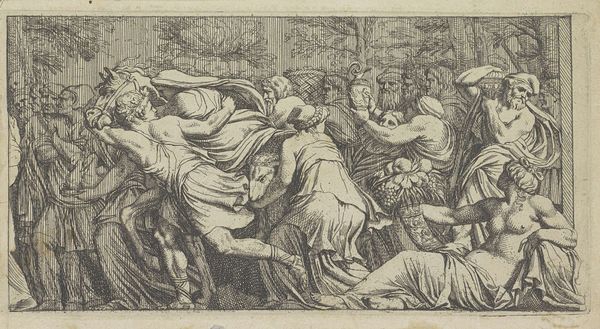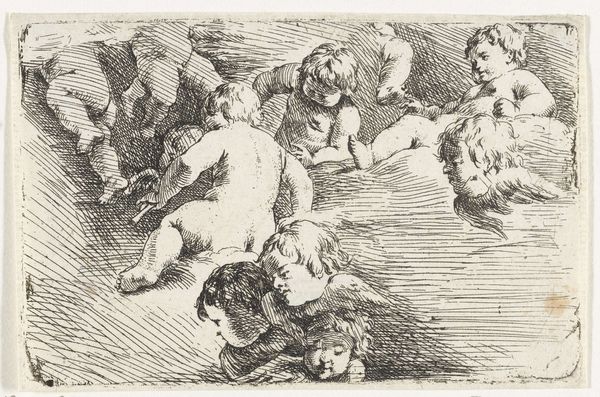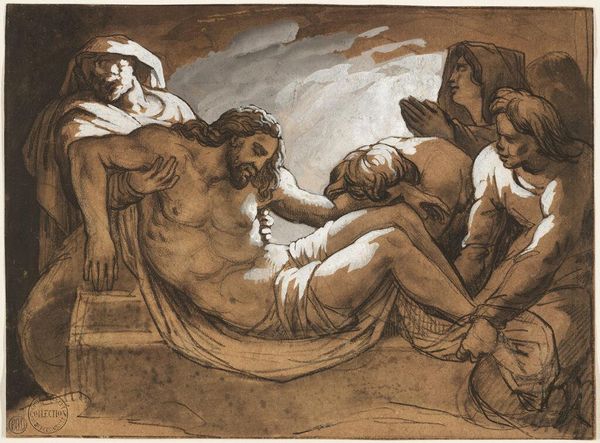
drawing, charcoal
#
portrait
#
drawing
#
baroque
#
pencil sketch
#
charcoal drawing
#
figuration
#
charcoal art
#
pencil drawing
#
portrait drawing
#
charcoal
#
pencil art
#
watercolor
Dimensions: height 91 mm, width 152 mm
Copyright: Rijks Museum: Open Domain
Curator: I'm immediately drawn to the muscularity rendered in such soft charcoal. There's a dynamic tension created between the delicate rendering and the robust forms. Editor: That’s an astute observation. This drawing, attributed to Jan Thomas, active in the 17th century, is titled “Faun schenkt wijn in voor een zittende man.” Or, in English, "Faun pouring wine for a seated man". The Baroque style is definitely palpable here. Curator: Baroque is certainly the operative style. The spiraling compositions create such dynamic arrangements of the figures within a frame; figures that command your attention. And even in this relatively small work on paper, there is grandiosity. What statements could you propose from a social point of view? Editor: Given that the patron or recipient of this piece remains unknown, our analysis opens to a range of theoretical possibilities. It raises some interesting points regarding the role of men in artistic portrayals from this era. The prominent musculature could emphasize cultural standards for virility, placing men as the key focus of artistic representation. The serving of wine by the faun potentially comments on social roles and perhaps on ideas related to classical mythology. It definitely seems that this classical subject is a chance for male bonding, too. Curator: Yes, I agree about your position on its depiction of masculine virility. The shading does feel deeply indebted to the era’s understanding of class and male beauty. I cannot resist discussing the composition further, the diagonals, especially along the central figure's arm, create such a vibrant rhythm to the picture plane. Note, too, the soft hatching to render form in a three-dimensional state. It shows a supreme understanding of form in space, so typical of Baroque artists. Editor: The diagonal is also an explicit artistic intervention in this particular period, too, don't you think? A compositional mode which is a very deliberate, stylish arrangement. I hadn’t even noticed the level of artistry with the shading until you highlighted it! The way Thomas is unafraid to use quite a variety of grey tones... I think it brings such life to these ancient forms, doesn't it? Curator: Absolutely. And that contrast between light and dark gives the composition such dramatic heft and compositional legibility. What an interesting glimpse into history we gain from simply considering line, tone, and form. Editor: And perhaps it's these very elements of tone, line, and historical consideration that bring us closer to understanding gender dynamics and artistic standards through the ages, just from a small drawing here at the Rijksmuseum.
Comments
No comments
Be the first to comment and join the conversation on the ultimate creative platform.
